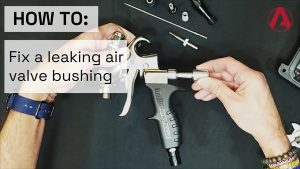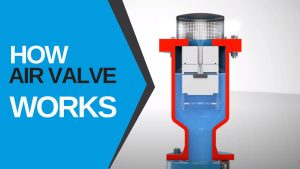What is a Positioner in Control Valve?
A valve positioner is a device that interfaces with the process controller and the actuator and is connected to the valve stem so it can sense the exact position of the valve. The positioner receives an input signal from the process controller and outputs a signal to the actuator to move the valve.
Valve Positioner Configuration
Valve positioners can be divided into pneumatic valve positioners, electro-pneumatic Valve positioners, and intelligent valve positioners according to their structure and working principle.
The valve positioner can increase the output power of the regulating valve, reduce the transmission lag of the regulating signal, speed up the movement of the valve stem, improve the linearity of the valve, overcome the friction of the valve stem and eliminate the influence of the unbalanced force In order to ensure the correct positioning of the control valve.
Valve Positioner Adapters
Commonly used actuators are pneumatic actuators, electric actuators, there are straight strokes, and angular strokes. For automatic, manual opening and closing of all kinds of valves, wind plates, etc.
Valve Positioner Working Principle
The valve positioner is the main accessory of the control valve. It takes the valve stem displacement signal as the input feedback measurement signal, takes the controller output signal as the setting signal, carries on the comparison, when the two have the deviation, changes its output signal to the executive mechanism, causes the executive mechanism action, the one-to-one correspondence between the displacement multiple of the valve stem and the output signal of the controller is established. Therefore, the valve positioner consists of a valve stem displacement measurement signal to the output of the controller set signal feedback control system. The control system’s control variables are the output signals of the valve positioner to the actuator.
Classification of Valve Positioners
The valve positioner according to the input signal is divided into a pneumatic valve positioner and an electrical valve positioner. Pneumatic valve positioner input signal is a standard gas signal, for example, 20 ~ 100KPA gas signal, its output signal is a standard gas signal. The electrical valve positioner input signal is the standard current or voltage signal, such as 4~20mA current signal or 1~5V voltage signal, etc. In the electrical valve, the positioner will be converted into electromagnetic force, the gas signal is then output to the dial control valve.
The direction of action can be divided into a one-way valve positioner and a two-way valve positioner. When the one-way valve positioner is used in the Piston actuator, the valve positioner operates in only one direction, and the two-way valve positioner operates on both sides of the piston actuator cylinder and in both directions.
According to the valve positioner output and input signal gain, symbols are divided into positive valve positioner and negative valve positioner. When the input signal of the positive-acting valve positioner increases, the output signal also increases, so that the gain is positive. When the input signal of the counter-acting Valve positioner is increased, the output signal is reduced and, therefore, the gain is negative.
According to a valve positioner input signal is an analog signal or digital signal, which can be divided into a general valve positioner and a field bus electric valve positioner. The input signal of a general valve positioner is analog air pressure or current and voltage signal, and the input signal of the field bus electric valve positioner is a digital signal of the field bus.
According to whether the valve positioner with CPU can be divided into general electric valve positioner and intelligent electric valve positioner. The general electric valve positioner does not have a CPU, therefore, it does not have intelligence and can not handle the relevant intelligent operations. The intelligent valve positioner with CPU can handle the intelligent operation, for example, it can carry out the nonlinear compensation of the forward channel, etc. The field bus electric valve positioner can also carry out the function module such as PID to realize the corresponding operation.
Ten articles before and after
News – 5 Common Solenoid Valves | API approved valve manufacturer
News – 5 Characteristics Of Solenoid Valve | API approved valve manufacturer
News – 6 Kinds Of Valves Commonly Used In Long Distance Pipeline | API approved valve manufacturer
News – 5 Tips For Choosing A Home Valve | API approved valve manufacturer
News – Modular Intelligent Electric Valve Controller | API approved valve manufacturer
News – The Development Course Of Valve | API approved valve manufacturer
News – 6 Characteristics Of Valve | API approved valve manufacturer
News – Application Of Valves In Water Supply System | API approved valve manufacturer












